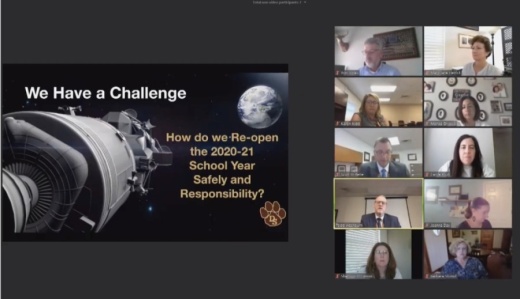"We have a challenge," Washburn said. "How do we reopen schools safely and responsibly given the health pandemic and the conditions that will be in place when we get to August?”
Washburn, who compared attempting to apply the traditional classroom model during a pandemic to "fitting a square peg in a round hole," said the district's teachers were working to prepare curriculum that was adaptable for in-person, virtual or hybrid learning models for the upcoming school year's first nine weeks of classes. Based on evolving COVID-19 case numbers and accompanying state and local gathering restrictions, all of these options are still on the table.
Some of the district's planning could be elucidated, Washburn said, once the Texas Education Agency gives further guidance on social distancing and other areas, a development expected in the coming days. For instance, if classrooms are required to operate at 50% capacity, a schedule alternating in-person attendance days for various groups of students would likely become necessary, and would promote a hybrid in-person/virtual learning model.

The district has also received input from 3,800 district parents, who responded to a survey sharing their preferences for learning models come fall. 36% of parents said they would send their children to school without any additional health protocols in place; 24% responded that they would send their children to school with health protocols in place; 20% said they would prefer to continue with remote learning; and 20% said they remained undecided.
While Washburn emphasized that offering families choices would be key, he also expressed that a hybrid learning model would come with the most challenges—in terms of childcare burdens for both parents and staff, curricular consistency and a range of other concerns.
“How do we try to best support our families? How do we best support our teaches who are delivering this model with kids of their own?” Washburn said.





